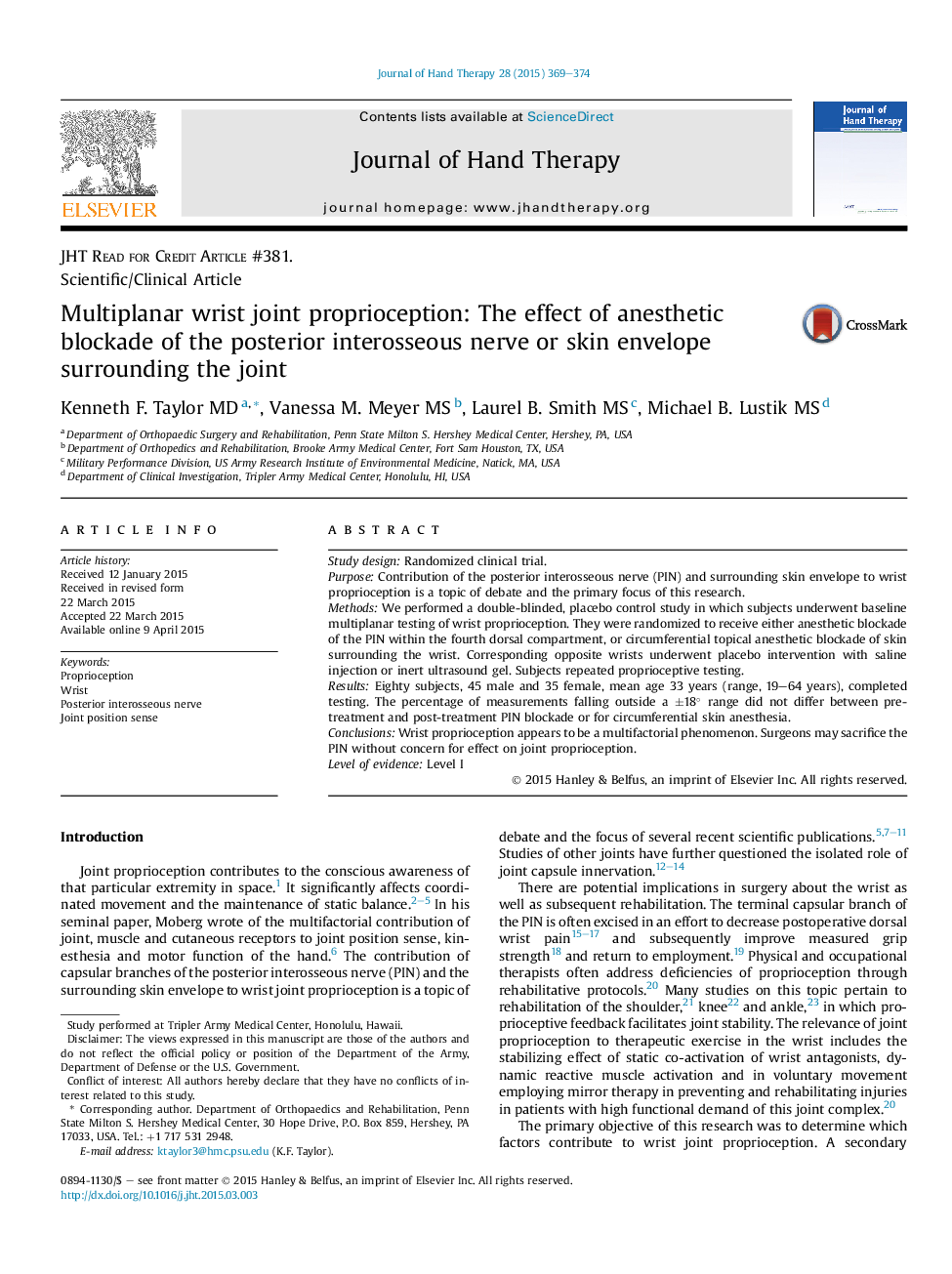| کد مقاله | کد نشریه | سال انتشار | مقاله انگلیسی | نسخه تمام متن |
|---|---|---|---|---|
| 2691920 | 1143394 | 2015 | 6 صفحه PDF | دانلود رایگان |

Study designRandomized clinical trial.PurposeContribution of the posterior interosseous nerve (PIN) and surrounding skin envelope to wrist proprioception is a topic of debate and the primary focus of this research.MethodsWe performed a double-blinded, placebo control study in which subjects underwent baseline multiplanar testing of wrist proprioception. They were randomized to receive either anesthetic blockade of the PIN within the fourth dorsal compartment, or circumferential topical anesthetic blockade of skin surrounding the wrist. Corresponding opposite wrists underwent placebo intervention with saline injection or inert ultrasound gel. Subjects repeated proprioceptive testing.ResultsEighty subjects, 45 male and 35 female, mean age 33 years (range, 19–64 years), completed testing. The percentage of measurements falling outside a ±18° range did not differ between pre-treatment and post-treatment PIN blockade or for circumferential skin anesthesia.ConclusionsWrist proprioception appears to be a multifactorial phenomenon. Surgeons may sacrifice the PIN without concern for effect on joint proprioception.Level of evidenceLevel I
Journal: Journal of Hand Therapy - Volume 28, Issue 4, October–December 2015, Pages 369–374